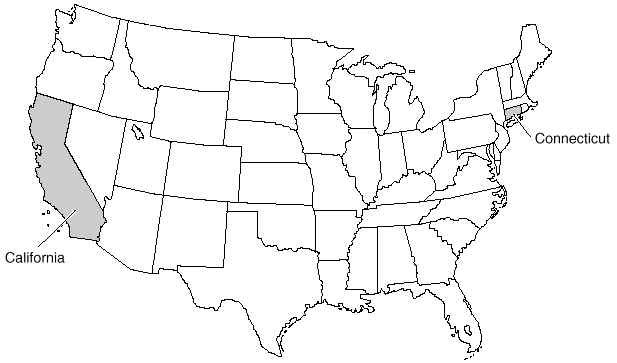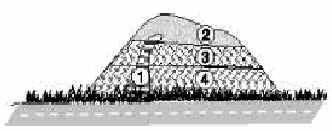Sample CAPT Questions - Earth's History and Dynamics
![]()
As a result of studying the composition of the Earth and the changes it undergoes:
Students understand interactions among the Earth’s lithosphere, hydrosphere,
atmosphere and biosphere.
1. Which best describes the changes occurring to the Earth’s surface over time?
a. New mountains are being formed as old mountains are gradually worn down.
b. Mountains are gradually being worn down, but no new ones are formed.
c. More mountains are gradually formed as the oceans recede.
d. New mountains are only formed under the oceans.
2. Why is an earthquake more likely to occur in California than in Connecticut? Explain your answer fully.

___________________________________________________________________
___________________________________________________________________
___________________________________________________________________
___________________________________________________________________
3. If the locations of earthquakes over the past 10 years were plotted on a world map, which of the following would be observed?
a. Earthquakes occur with the same frequency everywhere on Earth.
b. Earthquakes generally occur along the edges of tectonic plates.
c. Earthquakes most frequently occur near the middle of continents.
d. Earthquakes do not seem to occur in any consistent pattern.4. The Pacific Ring of Fire is a belt-shaped region that roughly coincides with the seacoasts bordering the Pacific Ocean. Explain why volcanic activity and earthquakes occur frequently in this region.
___________________________________________________________________
___________________________________________________________________
___________________________________________________________________
___________________________________________________________________
| Explain how the formation, weathering, sedimentation and reformation of rock constitute a continuing rock cycle. (EIVA2) |
5. Igneous rock and sedimentary rock can be transformed into metamorphic rock by similar processes. Explain these processes.
___________________________________________________________________
___________________________________________________________________
___________________________________________________________________
___________________________________________________________________
| Describe how waves, wind, water and ice shape the Earth’s land surface. (EIVA3) |
6. Which of the following features
best indicates that a valley was changed by a glacier?a. its width
b. its length
c. its height
d. its shape
7. It is harder to read the wording on very old tombstones than it is to read the wording on newer ones. This difference is most likely a result of:
a. dirt filling in the letters;
b. modern tombstones being made of artificial materials;
c. weathering of the stone; or
d. slow crystallization of the stone.
| Describe how geological history and major time periods can be determined using evidence from fossils and rock sequences. (EIVA4) |
8. Of the following statements, which best supports the continental drift theory?
a. All oceans are salty.
b. Igneous rocks are found on all continents.
c. Fossils of the same species of extinct land plants have been found in both South America and Africa.
d. Early humans migrated to North America over a land bridge from eastern Asia.

9. The diagram above shows a cross section of rocks beside a highway. Which rock type is the oldest?
a. rock type 1
b. rock type 2
c. rock type 3
c. rock type 4